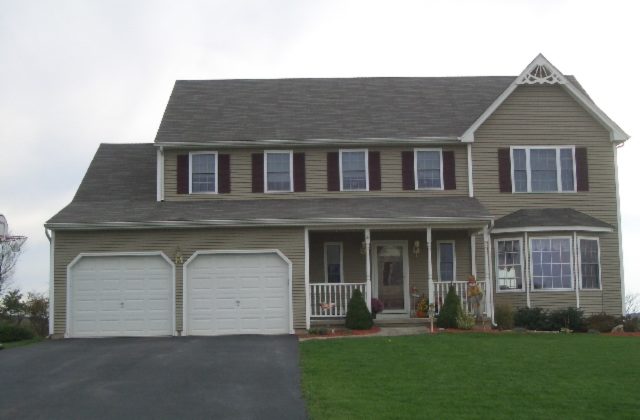A Green Model Home
Torrington house offers green efficiency
By Veronica Burns
The public perception of building a green house, one that is energy-efficient and uses materials that are kind to the environment, is that it costs a lot of green. But that notion is now being challenged. A 2,550 square foot home, recently begun in Torrington, will use construction and materials that are environmentally friendly, yet will have a sticker price in the same range as its neighboring houses.
In a project that combines marketing with social conscience, members of the Home Builders Association of Northwest Connecticut, the Litchfield County Board of Realtors and T&M Building Company of Torrington formed a Green Committee last summer, with the goal of making more green buildings available to the real estate market. This project, the group’s first, is being funded by T&M, and they are also building the home. “We decided early on,” says Andrea Becker-Abbott, who chairs the committee, “to prove that you could build a green home in line with the costs of other comparable houses.” On the practical side, T&M president Greg Ugalde says “we can’t price green built homes out of the market. We need to offer alternatives.”
Located in Torrington Chase, a new subdivision, the house will be compliant with the Green Home Guidelines issued by the National Association of Home Builders (NAHB), specifically seven guiding principles, which include the areas of energy and water efficiency, indoor environmental quality and resource efficiency. “This will be a well-rounded green house,” promises Steve Temkin, a T&M executive who is supervising the construction. “You can always go greener, but we are focusing on those seven areas and we do not want to go crazy with the price.” Norfolk realtor Carl Gundlach of Sullivan Real Estate, who is also a committee member, thinks this is a win-win situation. “People are starting to pay attention to the fact that we have been wasting a lot for a long time. With this house, I would expect the home owner to see some long-term beneficial savings.”
The colonial style house will be heated with natural gas, vented directly from the furnace to an outside wall, eliminating the need for a chimney. An on-demand water heater will be installed, as will flooring that is bamboo rather than hardwood, but which costs about the same. Bamboo is more sustainable since it regenerates in a short period of time as compared to forest stock. Lighting, windows and appliances will be Energy Star rated. “I love the idea of using an occupancy sensor in a room,” says Temkin, “as soon as you leave, the light will automatically shut off.” The toilets will be dual flush, using less water when flushing liquids. It’s claimed that this system alone can save a family of four some 6,000 gallons of water a year. Showerheads will be low flow and there will be no wood burning stoves here. Instead, a gas-burning fireplace behind sealed glass will be in the living room. Along with the house comes a user’s manual, to help the owner obtain maximum efficiency with all the bells and whistles.
Since educating the public about the availability of green products in the building industry is also an important part of the committee’s goal, students from Thomaston High School’s Media Center will be documenting the construction from start to finish, and will be airing it on public access television. The project is turning out to be a learning experience for all involved. “It’s like a pilot program,” says Ugalde, “the building associations are relying on us for feedback.” Gundlach also sees an interesting opportunity. “There’s a lot of new technology out there,” he says, “this gives us a chance to see how well it does – how it works for the builders and how well it holds up in the long run.”
The home, due to be completed next spring, is expected to sell in the upper $300,000 range.

